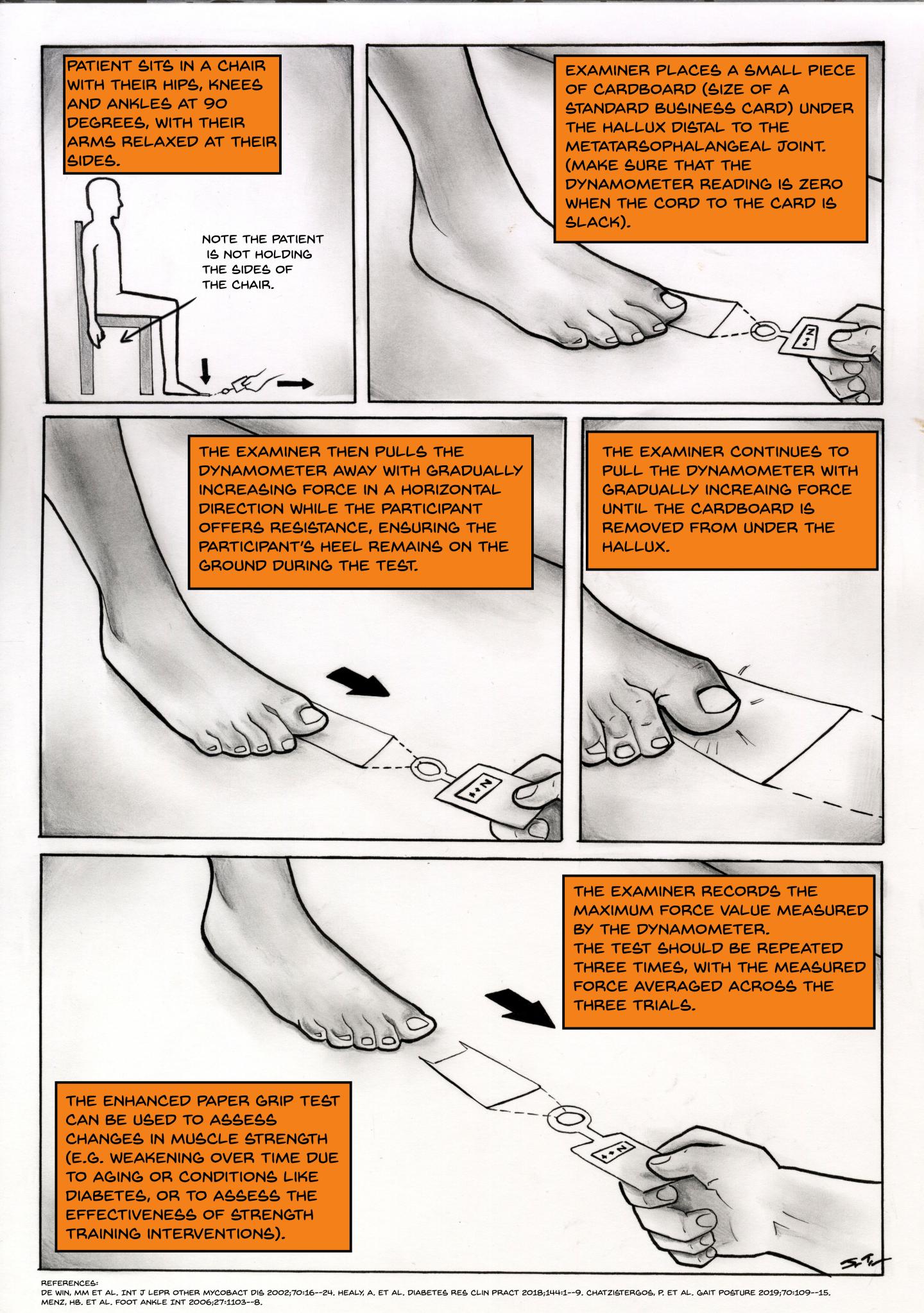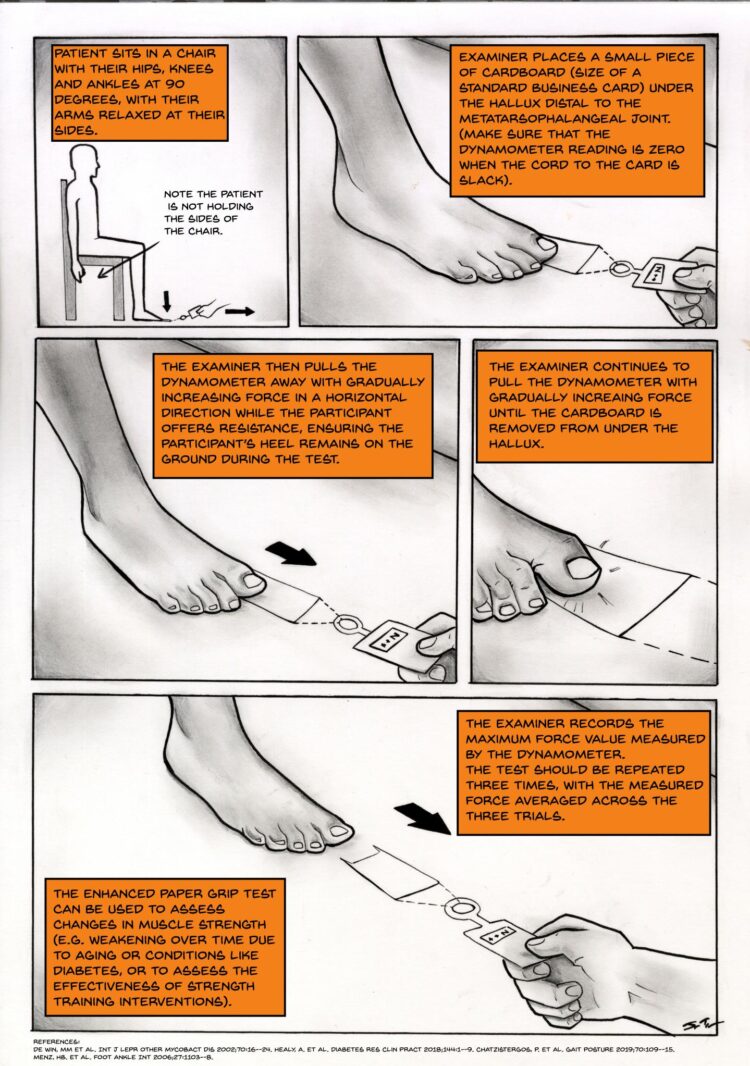Scientists have developed a simple clinical test that can assess the lower limb strength of patients to predict their risk of falls.

Credit: Staffordshire University/Josh Thomas
The “enhanced paper grip test” validated by researchers from the Centre for Biomechanics and Rehabilitation Technologies (CBRT) at Staffordshire University involves pulling a small card from underneath the participant’s foot while asking them to grip with their big toe (Hallux).
The proposed test can potentially be used to monitor muscle weakness in clinics for better falls-risk assessment in patients with diabetes.
Dr Aoife Healy, Associate Professor of Human Movement Biomechanics at CBRT, said: “The paper grip test is a simple, clinically applicable test to detect muscle weakness in the foot. The current paper builds on our previous work and shows its usefulness in assessing strength and balance in this group of vulnerable patients.”
The experiment involved assessing twenty healthy volunteers at Staffordshire University’s specialist Biomechanics labs and ten people with diabetes at a diabetic foot clinic in India.
Hallux grip force was previously found to be strongly linked to the strength of all muscle groups of the foot and ankle and to the ability to maintain balance. The latest results published in Gait and Posture on a modified test shows the reliability and validity of Hallux grip force during clinical assessment.
Dr Lakshmi Sundar, a co-author in this study and a diabetic foot specialist from Chennai in India, added: “This type of simple clinical assessment is extremely valuable in low resource settings and helps in providing effective clinical advice.”
Dr Panagiotis Chatzistergos, Associate Professor in Orthopaedic and Rehabilitation Biomechanics, who led this study highlighted: “The original version of the paper grip test was shown to be effective in detecting foot muscle-weakening but its outcome is operator-dependent. To overcome this limitation, we have developed this enhanced test that replaces the pass/fail outcome with a continuous measurement of the pulling force that is needed to remove the card.”
This latest study is part of the Centre for Biomechanics and Rehabilitation Technologies’ wider work in the area of diabetic foot management which includes research to help prevent life-threatening foot ulcers and amputations.
Professor Nachi Chockalingam, Director of the Centre for Biomechanics and Rehabilitation Technologies, said: “Falls and fear of falling are a major issue in the management of older adults. Also, falling for the first time sets in motion a cycle of increased fear of falling, reduced activity and loss of strength. This leads to a higher risk for further falls. So, it is important to identify individuals who might fall and preventing the first fall is extremely important.”
Read the full paper, published in Gait and Posture, here – Reliability and validity of an enhanced paper grip test; a simple clinical test for assessing lower limb strength
Media Contact
Maria Scrivens
[email protected]
Original Source
https:/
Related Journal Article
http://dx.





